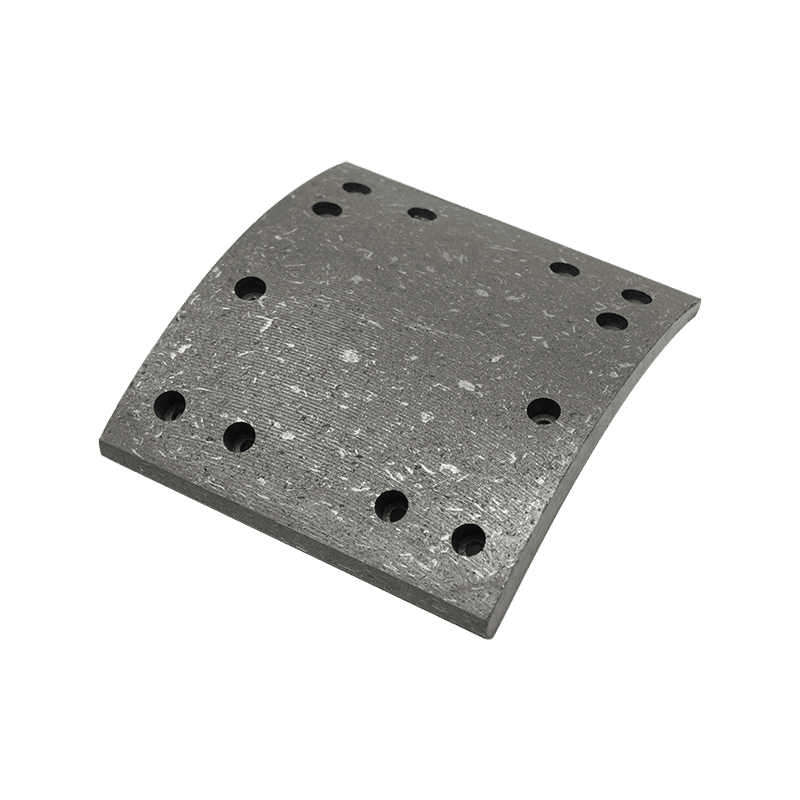 2025.10.17
2025.10.17
 Industry News
Industry News
When it comes to vehicle braking systems, few factors are as critical to safety as the performance and reliability of brake linings. With the phase-out of asbestos-based materials, manufacturers have turned to asbestos-free alternatives that promise comparable or even superior performance without the health hazards associated with asbestos fibers. However, like all friction materials, asbestos-free brake linings can be affected by environmental conditions—especially humidity and moisture.
Understanding how these conditions influence braking behavior is essential for both vehicle owners and maintenance professionals.
Before delving into moisture-related effects, it’s important to understand what asbestos-free brake linings are and how they differ from older asbestos-based products.
Asbestos was once widely used in brake linings due to its excellent heat resistance, stability, and friction characteristics. However, when asbestos fibers were found to cause serious respiratory diseases, regulations around the world led to the development of non-asbestos organic (NAO) and semi-metallic alternatives.
Modern asbestos-free linings typically include mixtures of synthetic fibers, aramids (like Kevlar), metallic particles, resins, and fillers. These materials are engineered to provide consistent friction, high wear resistance, and low noise levels—all while being safer for workers and the environment.
However, unlike asbestos, many of these new materials can interact with environmental moisture differently, sometimes affecting braking performance under certain conditions.
Brake linings rely on friction—the resistance generated between the lining and the drum or rotor—to slow or stop the vehicle. This frictional force depends heavily on both the material properties of the lining and the surface condition of the mating component.
When humidity or moisture enters the equation, it can influence this frictional interface in several ways:
In other words, humidity doesn’t just wet the brake surface—it can subtly (and sometimes significantly) change how the entire brake system behaves.
Many asbestos-free brake linings, especially organic types, are slightly porous. Under high humidity, these materials can absorb small amounts of moisture. This absorption can lead to microscopic swelling or softening of the lining matrix.
While modern resins and synthetic fibers minimize this effect, some low-cost asbestos-free formulations can experience a measurable change in braking feel when humidity is high.
A common phenomenon known as the first-stop effect occurs when brakes exposed to moisture show reduced friction on the first few applications. When the brake surfaces are damp, a thin water film forms between the lining and rotor, acting as a temporary lubricant.
Once the brake pads heat up and evaporate this moisture, friction levels return to normal.
This effect is most noticeable:
Asbestos-free linings made from metallic or ceramic composites tend to recover faster because they heat up more quickly, driving moisture away from the friction surface.
The friction coefficient (μ) measures how effectively the brake lining generates friction against the rotor. Humidity can temporarily lower μ values, especially in non-asbestos organic linings, where resins and fillers interact with absorbed moisture.
Test data show that:
However, this drop is generally reversible. Once the brakes warm up during operation, the coefficient stabilizes to its designed range.
While humidity affects the air environment, direct water exposure (such as driving through puddles or washing vehicles) can have a more dramatic impact.
When water directly contacts the brake surfaces, it can:
Asbestos-free linings are generally hydrophobic to some extent, but certain organic or resin-rich formulations may retain surface water longer. Modern designs counter this problem using:
In most modern vehicles, the wet braking recovery of asbestos-free linings is quite fast—usually within a few brake applications.
Humidity not only affects the friction material itself but also influences the surrounding components:
To counter these effects, manufacturers often apply anti-corrosion coatings, use stainless steel hardware, or design vented systems that improve airflow and moisture evaporation.

Brake manufacturers routinely test asbestos-free linings under controlled humidity and temperature conditions to ensure reliable performance. Common test standards include:
Results from these tests help ensure that asbestos-free materials maintain predictable friction behavior even after exposure to moisture.
The impact of humidity on brake linings varies by climate and application:
Fleet operators in humid environments often choose semi-metallic or ceramic-based asbestos-free linings for better resistance to moisture and more stable braking performance.
Proper maintenance can greatly reduce the negative effects of humidity or moisture on asbestos-free brake linings. Key practices include:
After installation, ensure proper bedding-in of brake linings. This process establishes a stable transfer film between the lining and rotor, improving friction consistency even in humid conditions.
For replacement linings, store them in dry, ventilated environments. Prolonged storage in damp areas can lead to moisture absorption, affecting performance once installed.
After driving through water or in heavy rain, gently apply the brakes a few times to dry the linings. This habit restores normal friction quickly and prevents corrosion.
The brake industry continuously develops new materials and coatings to improve moisture resistance. Some recent innovations include:
These technologies have made modern asbestos-free brake linings far less sensitive to humidity than early formulations.
Humidity and moisture are unavoidable environmental factors that can influence the performance of any braking system. For asbestos-free brake linings, these effects are generally temporary and manageable, provided the materials are of high quality and properly maintained.
While high humidity can cause short-term friction reduction, minor material swelling, or corrosion of metal components, modern linings are engineered to recover quickly and maintain reliable braking under a wide range of conditions.
For drivers, regular maintenance, proper storage, and smart driving habits after wet exposure can ensure consistent braking performance. For fleet managers and technicians, selecting well-tested, high-grade asbestos-free linings—especially those designed for humid environments—remains the best safeguard.
Ultimately, asbestos-free brake linings have proven themselves not only as a safer alternative but also as a resilient and adaptable technology capable of maintaining safety and performance even when nature adds a little moisture to the mix.